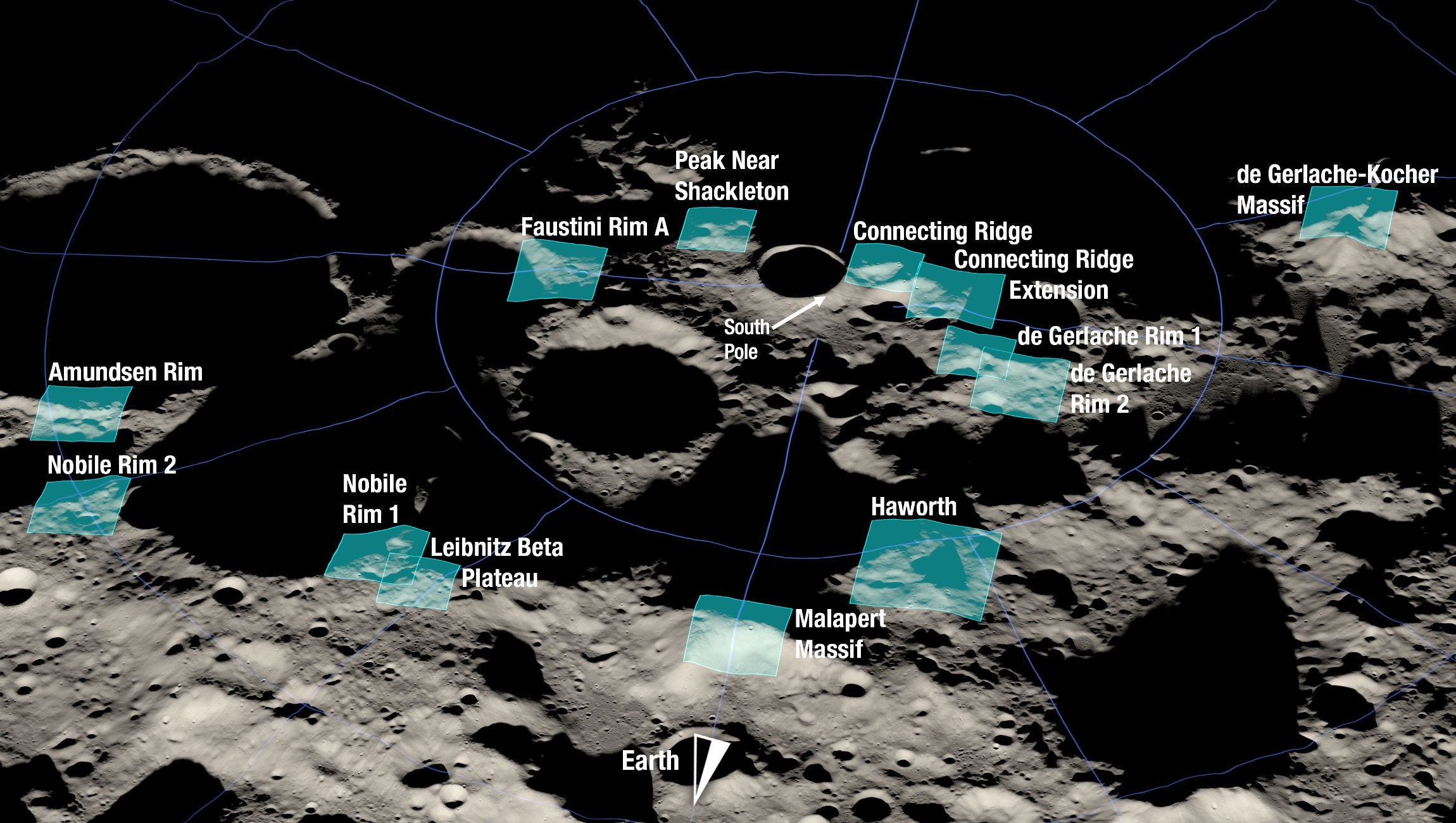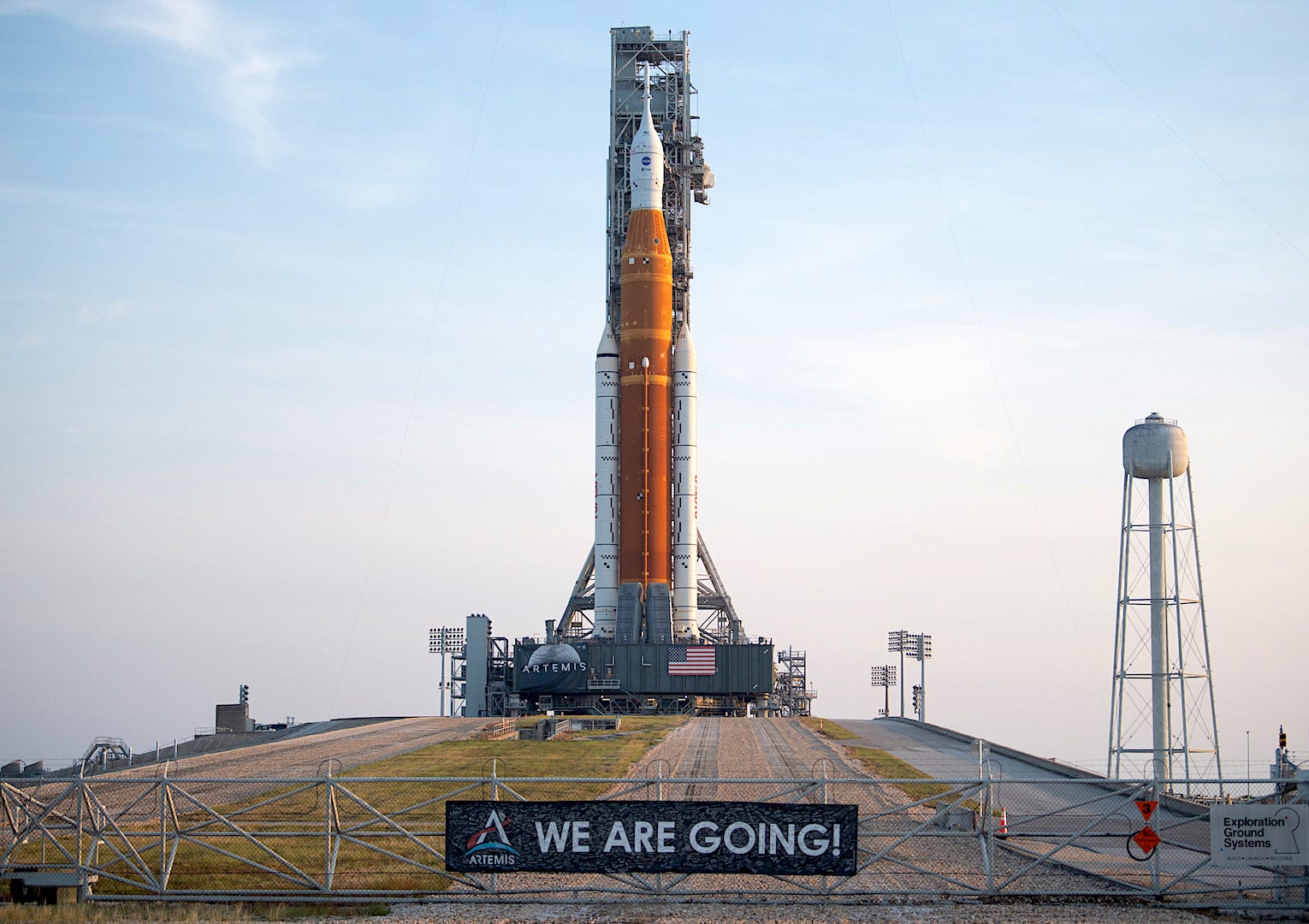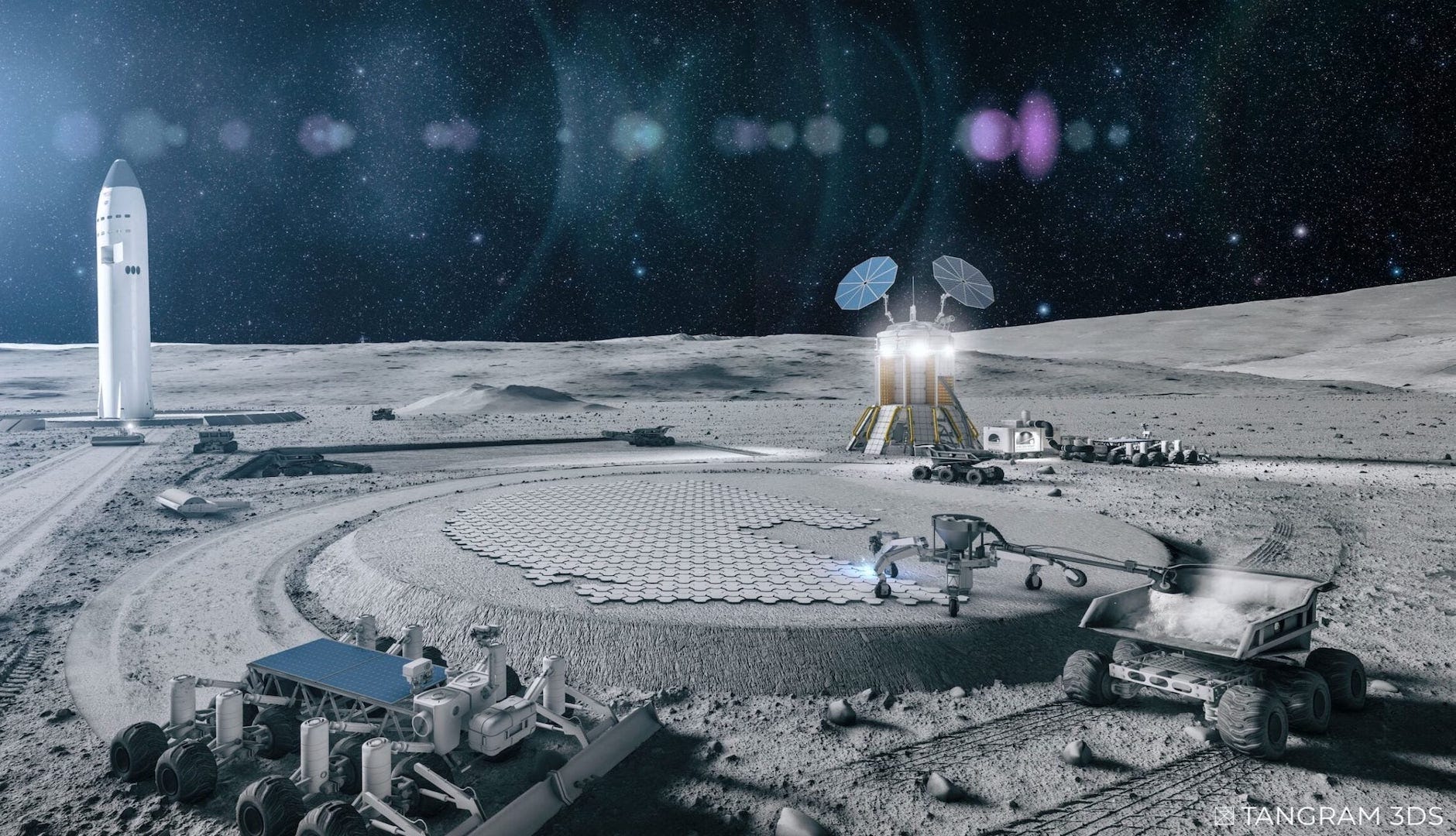Moon Monday #91: Artemis landing sites and a launch on the horizon, lunar construction, and more updates
Potential zones for the first Artemis Moon landing
Following an uncrewed and crewed flight around the Moon with Artemis I and Artemis II respectively, NASA will land astronauts on the lunar surface mid-decade with Artemis III. Its astronauts will reach lunar orbit in an Orion spacecraft blasted from Earth by an SLS rocket. A crewed lunar variant of SpaceX Starship called the Human Landing System (HLS) will dock with Orion, and carry astronauts to the surface and back. While NASA’s selection of HLS Starship and commercial spacesuits largely culminate the technology stack to be used for this historic return of humans to the Moon after Apollo, the science end is now catching up.
After the Science Definition Team laid out the mission’s science priorities in December 2020 and NASA revealed Artemis’ science structure in March 2022, the agency has now announced 13 candidate landing zones for Artemis III, chosen meticulously out of a filtered list of 28 using data from the Lunar Reconnaissance Orbiter, decades of lunar science findings, and keeping in mind engineering constraints (discussed below).

A few interesting things to note about these selections:
Since a key priority of Artemis III is to cryogenically sample and bring pristine and precious lunar polar volatiles to Earth for meticulous studies, nearly all the landing zones contain numerous big and small permanently shadowed regions with Earth-facing slopes. This was expected but it’s good to have it anchored. Also considering that some of these zones contain locations with ancient crustal and/or mantle material, Artemis III is likely to further advance our understanding of the Moon’s origin and evolution.
At least two currently known landing regions of NASA CLPS missions show up for Artemis III too.
The VIPER rover is set to explore an area near the western edge of the Nobile crater whereas two Artemis III zones are on Nobile’s rim.
Intuitive Machines’ second lunar lander will touchdown on a ridge connected to the Shackleton crater.
The inclusion of the Malapert and Leibnitz plateaus is interesting because their near-polar locations coupled with high altitudes uniquely afford them practically 100% Earth-visibility despite the Moon’s libration.
Like any mission to the Moon’s poles, choosing a landing site for Artemis III has unique challenges. The steep, rocky polar terrain renders flat areas only about 100 meters across, which thus become the unforgiving landing precision requirement for HLS Starship or any lander. Moreover, the terrain coupled with the forever near-horizon, circling Sun provide sufficiently continuous lighting only to elevated areas such as crater rims or peaks, that too at different times for different places. The final landing site and launch date(s) for the Artemis III mission, which needs continuous lunar polar sunlight for 6.5 days, will thus be selected based on aforementioned factors as well as combined constraints from SLS, Orion, and Starship.
We tend to focus on the larger picture so much that it’s easy to forget the sheer difficulty of any landing in the lunar polar hellscape. One with crew is captivating.

Many thanks to Epsilon3 for sponsoring this week’s Moon Monday.
Thanks also to Hunter Danque for supporting my independent writing.
An SLS rocket on its launchpad for the last time?
On August 17, the fully stacked SLS rocket arrived at its launchpad in Kennedy Space Center for quite possibly the last time. If all goes well, it will launch on August 29, or September 2 or 5, for the Artemis I mission to send an uncrewed Orion spacecraft around the Moon and back. This move follows successful testing of the rocket’s flight termination system the weekend before. With experience from the wet rehearsal tests earlier this year, teams have refined pre-launch procedures and so the launch timeline is now updated accordingly.

After the SLS rocket launches, the second stage will fire its engine to push the connected Orion spacecraft out of Earth orbit and on a trajectory to the Moon. It’ll then separate from Orion, and subsequently deploy 10 CubeSats on independent scientific missions. NASA now has a timeline chart for these deployments. Marcia Smith reports that the batteries of 5 of the CubeSats can’t be recharged. Since they were installed onto SLS last year, Artemis I missing launching by September could be concerning for their missions.
Astrobotic’s first Moon lander almost assembled
Astrobotic is progressing well in preparing its Peregrine lander for launch, likely in early 2023, as part of NASA’s CLPS program to carry the agency’s science and technology payloads to the Moon. With the Terrain Relative Navigation (TRN) camera and compute hardware as well as its twenty four payloads now integrated, the lander is nearing full assembly.
Additionally, Astrobotic successfully completed end-to-end communications testing for the mission last month, wherein Astrobotic’s Mission Control Center passed commands to their flight lander via NASA’s Deep Space Network, and the lander responded by sending telemetry. Last year, Intuitive Machines did a similar test with partner Morehead’s 21-meter antenna and NASA’s LRO spacecraft to validate their first CLPS lander’s communications system. The company is yet to reveal their flight lander while publicly maintaining a target launch in December 2022.
Towards lunar construction
As part of the second Lunar Surface Technology Research (LuSTR) solicitation, NASA will provide up to $2 million each to three U.S. university-led teams to develop their proposed technologies related to future lunar-living.
The Colorado School of Mines—in partnership with Lunar Outpost, Michigan Tech and Betchel—will develop a rover-enabled autonomous lunar landing pad construction system, and demonstrate as much on Earth.
Relatedly, NASA recently awarded a small contract to Astroport to develop prototypes of parts of the technology that will melt lunar regolith, convert it to manufacturing feedstock, and use that to robotically assemble infrastructure like landing pads.
The Missouri University of Science and Technology will use magnetism and electrostatics to better separate calcium- and aluminum-containing minerals from lunar regolith and extract materials suitable for construction.
Relatedly, for the eighth BIG Idea Challenge, NASA is asking university students to build and demonstrate concepts for any major part of a lunar metal production pipeline—from efficiently extracting metals from lunar minerals to making additively manufactured infrastructure such as pipes, rails and more.
Auburn University will use data from recent lunar missions to create more reliable space grade electronics that function efficiently in the frigid lunar night and in permanently shadowed regions, where temperatures go well below -180 degrees Celsius.
Relatedly, NASA recently selected Microchip Technology Inc. for a $50 million firm-fixed-price contract to develop a computing processor that provides at least 100 times the performance of modern spaceflight computers while being more tolerant to factors like radiation.

More Moon
- SpaceNews reports that in response to Masten Space filing for Chapter 11 bankruptcy, following the company’s laying off of employees exclusively working on its first CLPS Moon landing, Astrobotic has made a formal bid of $4.2 million for “substantially all” of Masten’s assets. Also, SpaceX had terminated Masten’s launch contract on June 30 because of missed payments.
- NASA, via LSII, is looking into buying lunar data from missions via a formal mechanism, and is asking the community for feedback.
→ Browse the Blog | About | Donate ♡
